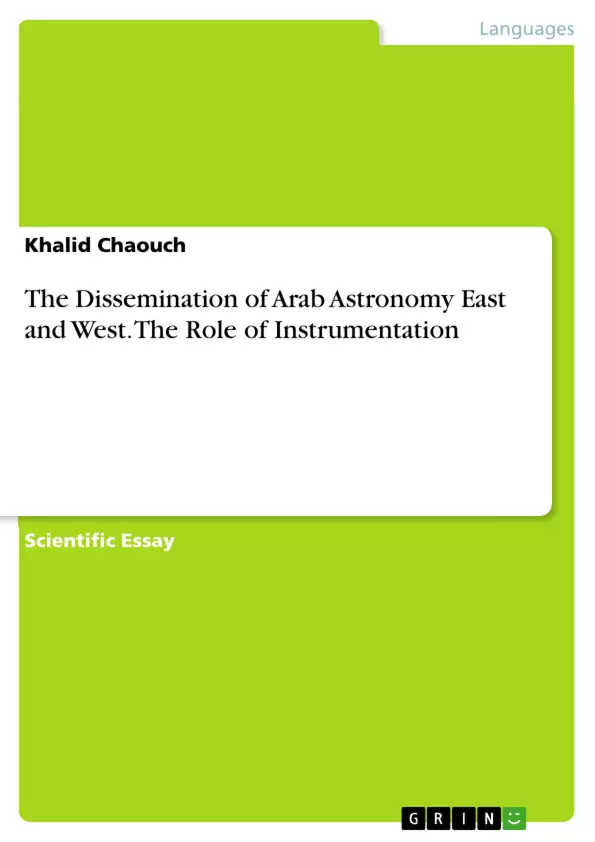Reconstructing the history of Arab astronomy will only be possible by the study and analysis of both its texts – old and new – and its different instruments, a systematic process that will certainly shed more light on the different mechanisms and phases of the continuous evolution of this science.
The translation of Greek astronomy works into Arabic in the 8th and 9th centuries and the different implications that it represents are issues that need further investigation, especially as regards the concept of astronomy dissemination among common people. The aim of this paper is to bring into prominence the effects of astronomy popularization that came as a consequence of the movement of translation and of the ensuing wave of instrumentation and commentating works.
Inhaltsverzeichnis (Table of Contents)
- The Phase of translation and its effects
- The need to instrumentation
- Instrumentation of astronomy
- On instruments and their makers
- Technical works on how to make one’s own instrument
- The Role of Instrumentation in Dissemination
- Popularizing astronomy by treatises
- Popularizing astronomy by instruments
Zielsetzung und Themenschwerpunkte (Objectives and Key Themes)
This paper aims to highlight the effects of astronomy popularization that resulted from the translation movement and the subsequent wave of instrumentation and commentating works. It explores the significance of instrumentation in disseminating Arabic astronomy both within the Islamic world and to the West.
- The role of translation in popularizing astronomy
- The development of astronomical instruments in the Islamic world
- The impact of instrumentation on the dissemination of astronomical knowledge
- The transmission of astronomical knowledge and instruments from East to West
- The role of patronage and apprenticeship in the development of astronomical instruments
Zusammenfassung der Kapitel (Chapter Summaries)
Chapter 1 discusses the impact of the translation movement in Baghdad during the 8th and 9th centuries on the dissemination of astronomical knowledge. It emphasizes the international nature of this movement and its role in creating a "melting pot" of scholars and translators from diverse cultures.
Chapter 2 delves into the importance of instrumentation in the development of Arabic astronomy. It examines the need for new instruments, their specific functions, and the evolution of their design. It highlights the role of prominent figures like Al-Mamoun, Ibn Ashātir, and Al-Battani in advancing the field of instrumentation.
Chapter 3 explores the role of instrumentation in disseminating astronomical knowledge. It examines how treatises on instruments and their use made astronomical concepts more accessible to both specialists and ordinary users. The chapter also discusses the impact of Arabic astronomical instruments on the West, particularly the astrolabe, and the subsequent translation of Arabic texts on the subject into Latin.
Schlüsselwörter (Keywords)
This paper centers on the key terms and concepts related to the development and dissemination of Arabic astronomy. Key foci include the influence of translation, the evolution of astronomical instruments, the transmission of knowledge from East to West, the role of patronage and apprenticeship, and the importance of practical knowledge in disseminating astronomical concepts.
- Quote paper
- Khalid Chaouch (Author), 2016, The Dissemination of Arab Astronomy East and West. The Role of Instrumentation, Munich, GRIN Verlag, https://www.hausarbeiten.de/document/337817


